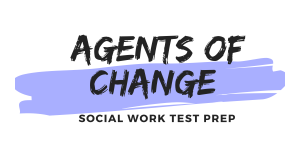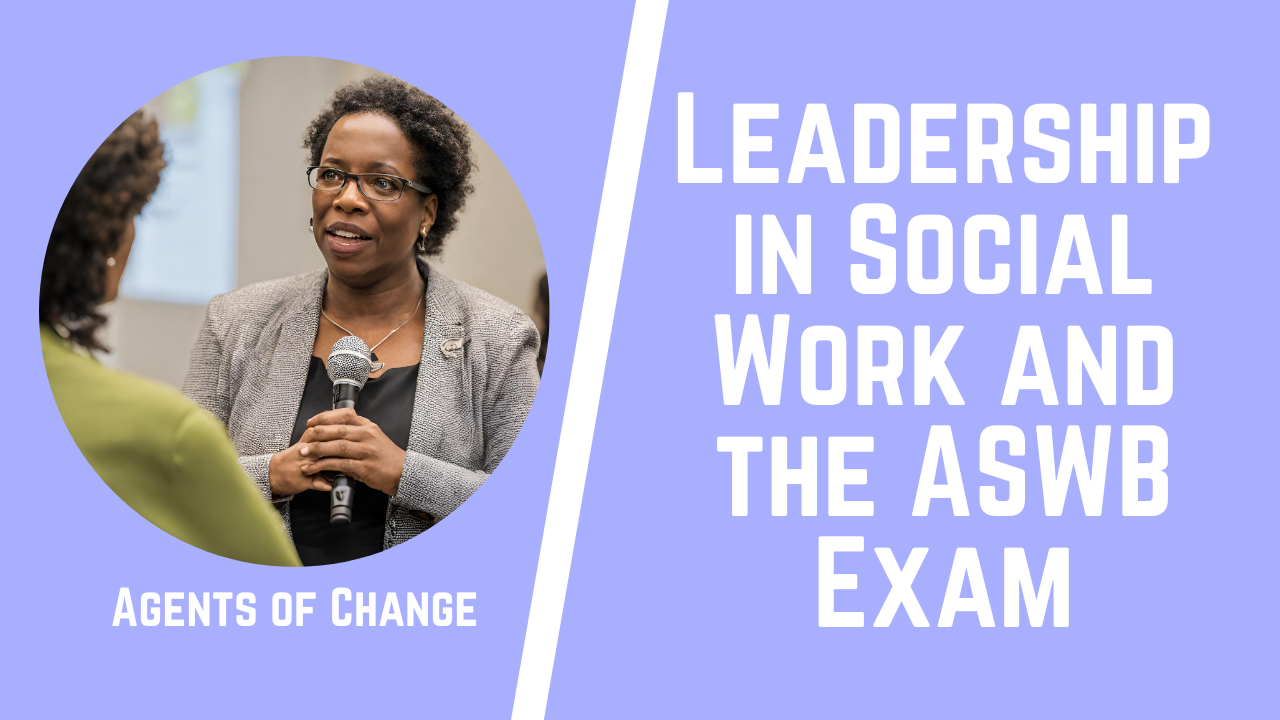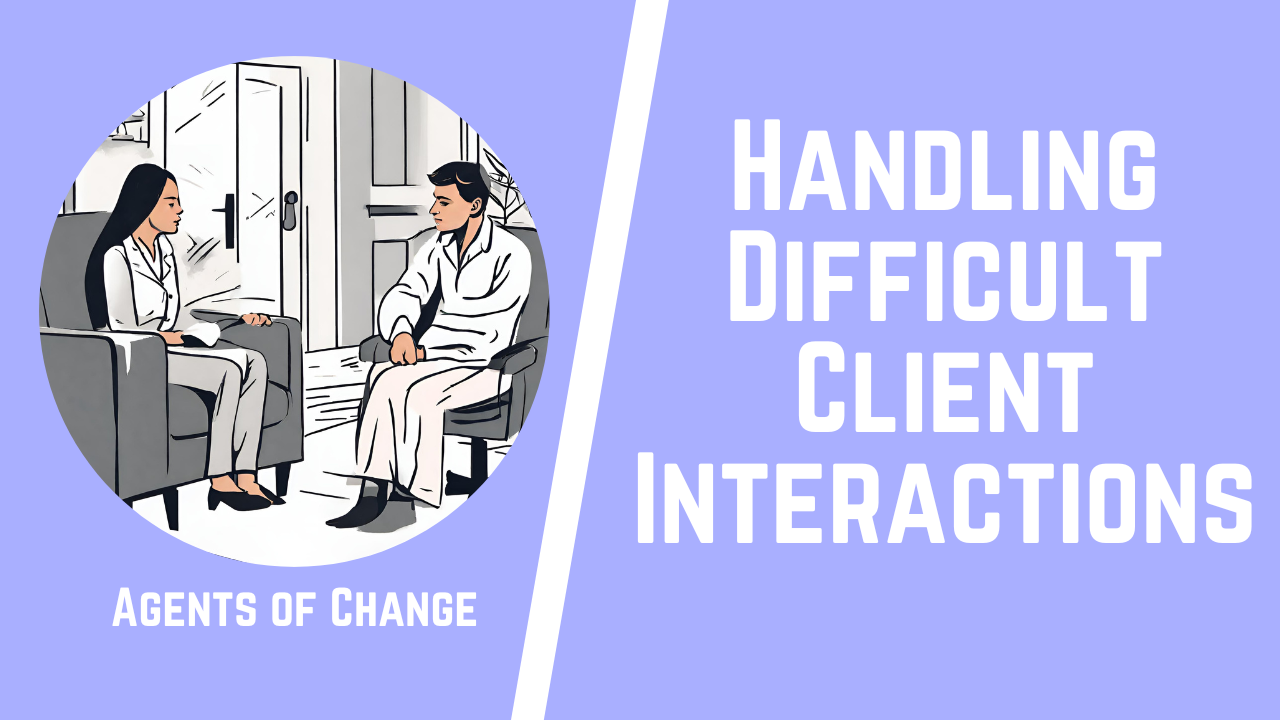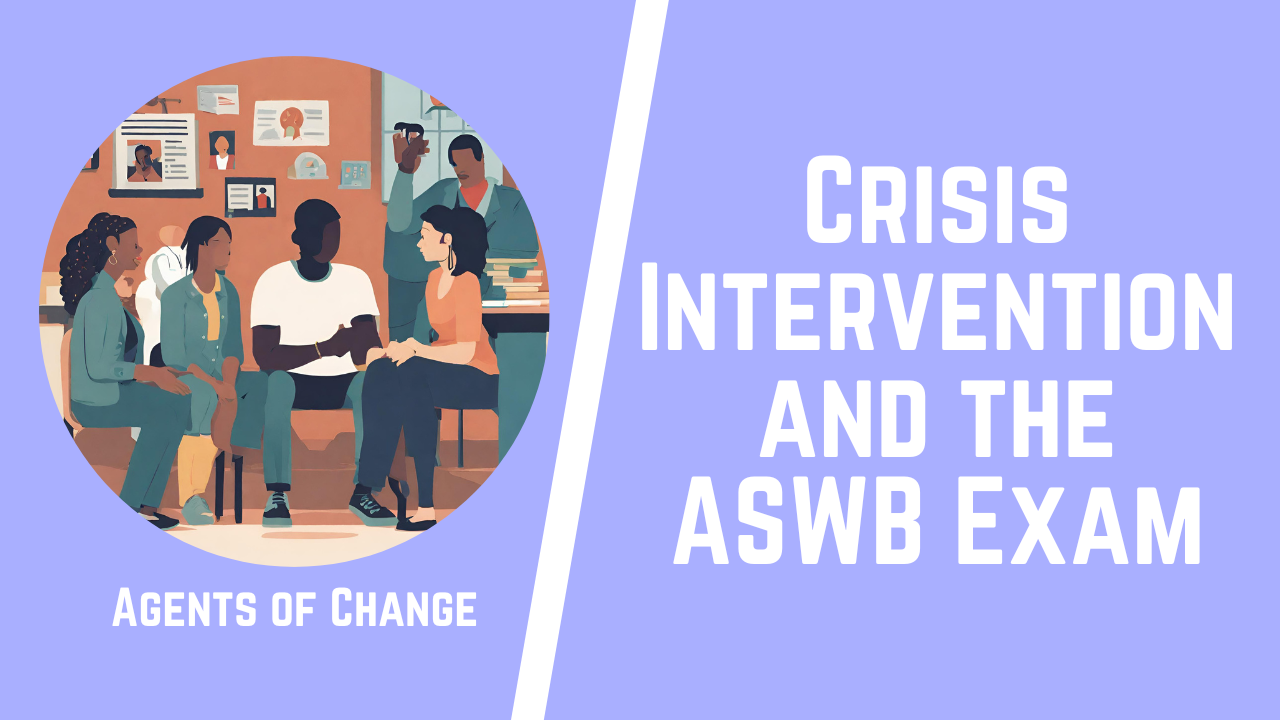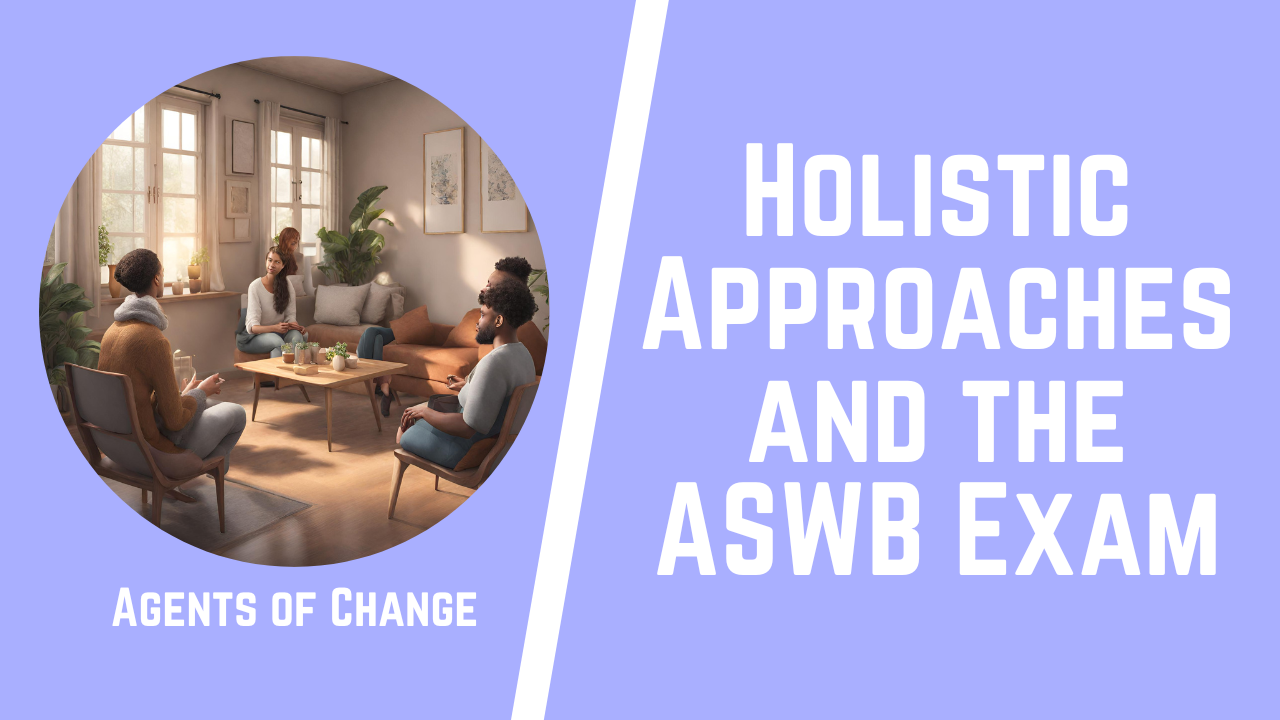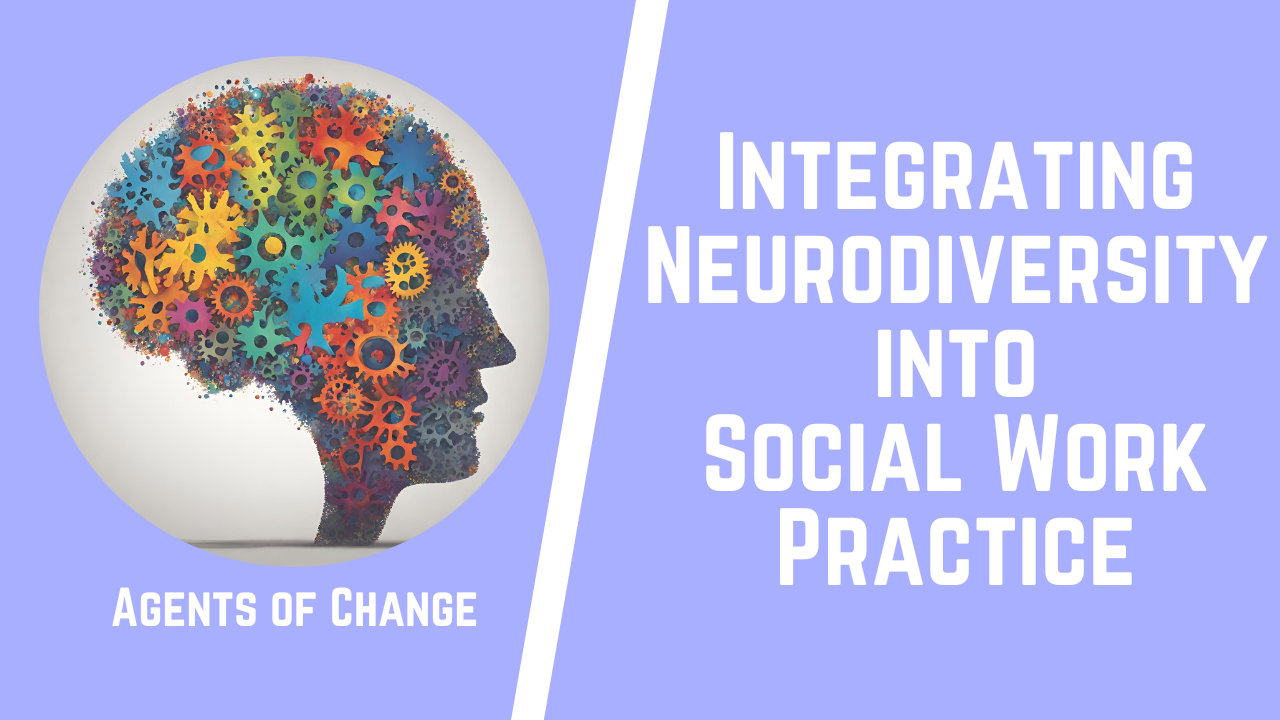Looking for Part 1? You can find it here: The 4 Hardest ASWB Practice Questions On Our Practice Exam (Exam 1)
At Agents of Change, we’ve had 1000’s of students take our practice exams over the past few years.
In order to help our students achieve their best possible results, we have analyzed data from thousands of individuals who have taken our practice exam. Through this analysis, we have identified the 3 questions from our 2nd practice exam that have consistently been the most difficult for students to answer correctly.
But fear not! In this blog post, we will guide you through these challenging questions, providing you with the necessary strategies and insights to tackle them with confidence. Whether you’re a first-time test-taker or have attempted the ASWB exam before, we believe that our breakdown of these difficult questions will be valuable in your preparation.
So, let’s roll up our sleeves and get ready to tackle the 3 hardest ASWB practice questions from our 2nd practice exam together!
The Hardest Questions on Exam 2
1) A school social worker is working with a child who has a skin infection that has become progressively worse. The parents have not taken the child for medical treatment and are dismissive of the child’s concerns. The child complains of pain and frequently cries due to discomfort. Which of the following actions is most appropriate for the social worker to take in this situation?
a. Consult with the school nurse and inform the family that further medical attention is necessary because the child is in pain and the condition continues to worsen.
b. Have the school nurse treat the skin while the child is at school.
c. Ask the family about their cultural and religious beliefs to determine if that affects their decision to access medical services.
d. Make a CPS report for medical neglect.
2) The BEST way to establish support for the funding of a community development program is:
a. Gaining support and approval from community leaders.
b. Establishing and mobilizing grassroots organizing and support.
c. Presenting data on similar programs with high success rates.
d. Presenting an evidence-based implementation plan.
3) A social worker is treating a client whose roommates have expressed concern about recent changes in her behavior. Historically, the client reports low mood and social isolation, as well as a lack of appetite. However, over the past week, the client has experienced an increase in energy, staying up for 15 hours at a time to talk on the phone with a partner and getting little to no sleep. Based on these symptoms, which of the following is the most appropriate diagnosis for the client?
a. Major Depressive Disorder.
b. Bipolar 1 Disorder.
c. Bipolar 2 Disorder.
d. ADHD.
Answers and Rationales
1) A school social worker is working with a child who has a skin infection that has become progressively worse. The parents have not taken the child for medical treatment and are dismissive of the child’s concerns. The child complains of pain and frequently cries due to discomfort. Which of the following actions is most appropriate for the social worker to take in this situation?
a. Consult with the school nurse and inform the family that further medical attention is necessary because the child is in pain and the condition continues to worsen.
b. Have the school nurse treat the skin while the child is at school.
c. Ask the family about their cultural and religious beliefs to determine if that affects their decision to access medical services.
d. Make a CPS report for medical neglect.
Correct Answer: A (82% answered this question incorrectly)
Rationale: The child is experiencing discomfort, and the condition is worsening, and it is the responsibility of the social worker to ensure that the child receives the necessary medical attention. Consulting with the school nurse and informing the family about the need for further medical treatment is the most appropriate way to address the child’s needs and ensure their well-being. It is also important for the social worker to consider the family’s cultural and religious beliefs, but this should not be the primary focus of the intervention in this case, as the child’s medical needs and comfort should be the top priority. Making a CPS report for medical neglect may be necessary in certain situations, but it is not the first course of action in this case, as it may not be appropriate or necessary if the family is receptive to seeking medical treatment and addressing the child’s needs.
2) The BEST way to establish support for the funding of a community development program is:
a. Gaining support and approval from community leaders.
b. Establishing and mobilizing grassroots organizing and support.
c. Presenting data on similar programs with high success rates.
d. Presenting an evidence-based implementation plan.
Correct Answer: B (66% answered this question incorrectly)
Rationale: When working with communities, it is important to work alongside community members and have them become active participants in community work. A community development program is most likely to be funded when support and action are being taken by those who live and work in the community and who the issues directly affect.
3) A social worker is treating a client whose roommates have expressed concern about recent changes in her behavior. Historically, the client reports low mood and social isolation, as well as a lack of appetite. However, over the past week, the client has experienced an increase in energy, staying up for 15 hours at a time to talk on the phone with a partner and getting little to no sleep. Based on these symptoms, which of the following is the most appropriate diagnosis for the client?
a. Major Depressive Disorder.
b. Bipolar 1 Disorder.
c. Bipolar 2 Disorder.
d. ADHD.
Correct Answer: C (62% answered this question incorrectly)
Rationale: Bipolar 2 Disorder is characterized by periods of depressed mood and periods of hypomania, which is a less severe form of mania. The client’s reported low mood and social isolation are consistent with the depressed phase of bipolar disorder, and the recent changes in behavior, including an increase in energy, staying up for 15 hours at a time, and getting little to no sleep, are consistent with hypomanic episodes.
You’ve Got This!
The ASWB exam can be a challenging test and requires a great deal of preparation and practice. By familiarizing yourself with the hardest practice questions, you can develop the skills and strategies necessary to approach them with confidence and accuracy.
Remember to read each question carefully, eliminate obvious incorrect answers, and utilize your knowledge and critical thinking skills to arrive at the best possible answer. Additionally, take advantage of study materials and resources, such as practice exams, study guides, and tutoring services to increase your chances of success on the ASWB exam.
With dedication and perseverance, you can overcome the toughest questions and achieve your goal of becoming a licensed social worker!
————————————————————————————————————————————————
► Learn more about the Agents of Change course here: https://agentsofchangeprep.com
About the Instructor, Meagan Mitchell: Meagan is a Licensed Clinical Social Worker and has been providing individualized and group test prep for the ASWB for over five years. From all of this experience helping others pass their exams, she created the Agents of Change course to help you prepare for and pass the ASWB exam!
Find more from Agents of Change here:
► Facebook Group: https://www.facebook.com/groups/aswbtestprep
► Podcast: https://anchor.fm/agents-of-change-sw
#socialwork #testprep #aswb #socialworker #socialwork #socialworktest #socialworkexam #exam #socialworktestprep #socialworklicense #socialworklicensing #licsw #lmsw #lcsw #aswbexam #aswb #lcswexam #lmswexam #aswbtestprep #aswbtest #lcswtestprep #lcswtest #lmswtestprep #lmswtest #aswbcourse #learningstyles #learningstyle
Disclaimer: This content has been made available for informational and educational purposes only. This content is not intended to be a substitute for professional medical or clinical advice, diagnosis, or treatment
